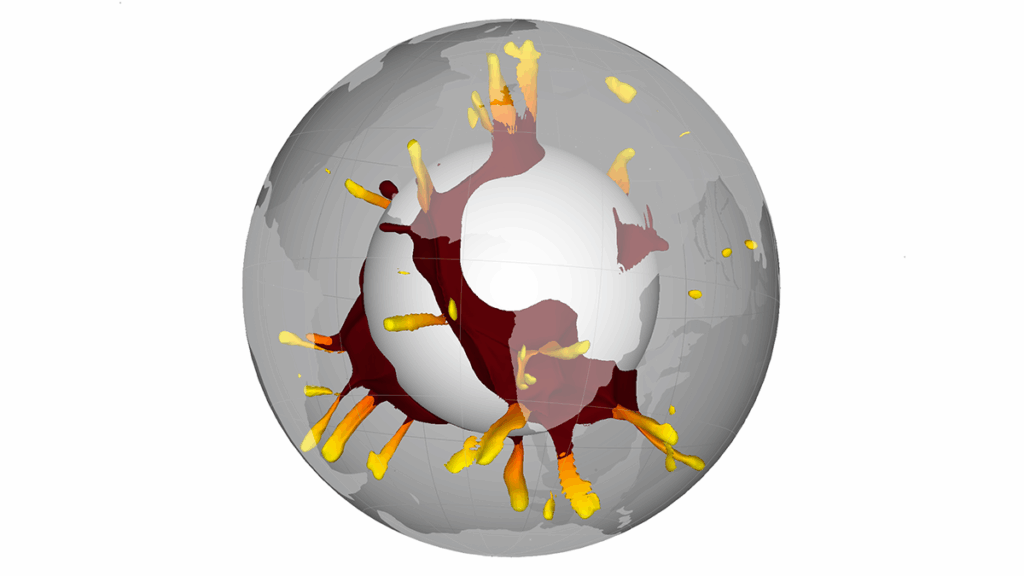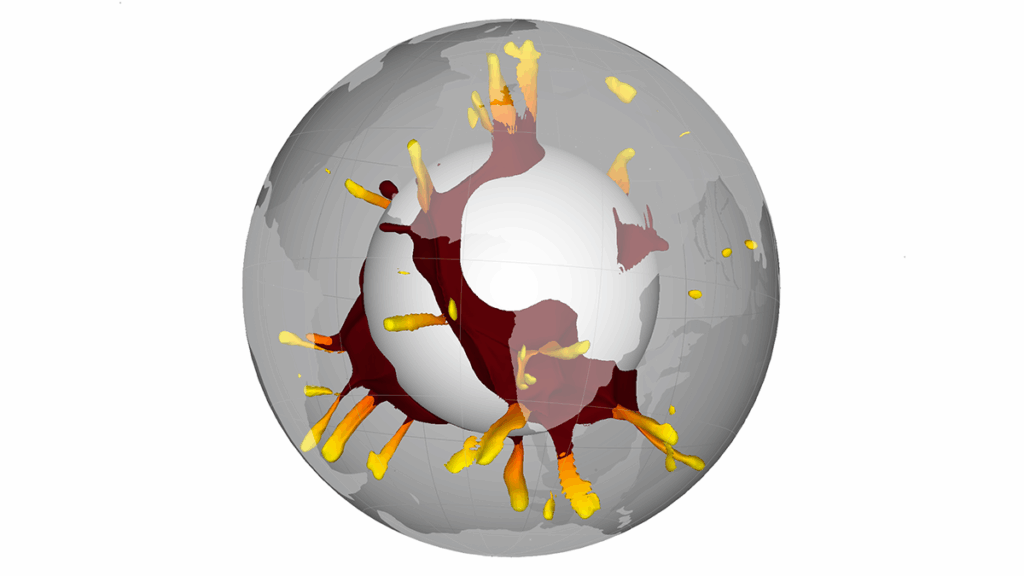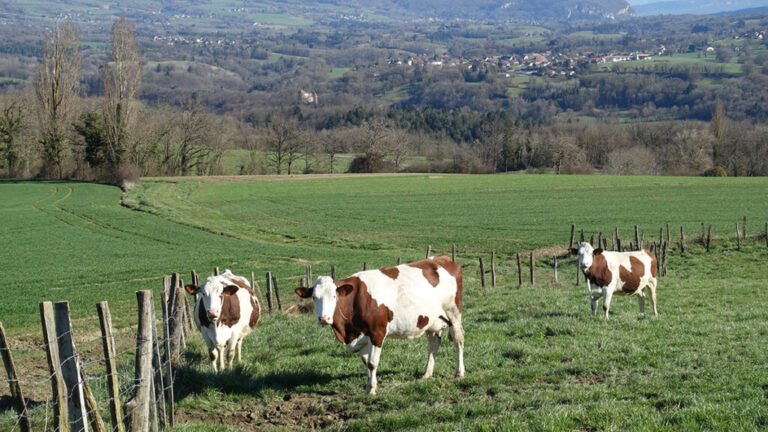

Regions known as large low shear velocity provinces—more memorably known as “big lower-mantle basal structures,” or BLOBs—have long been known to seismologists because seismic waves generated by earthquakes slow down when they pass through them.
One BLOB is under Africa, and the other sits below the Pacific Ocean. They are thousands of kilometers wide and may be more than a thousand kilometers high, containing up to 8% of Earth’s total volume.
The origin of the BLOBs is not certain, nor is it clear what they are made of. Many researchers think the BLOBs formed from subducting oceanic crust at ancient plate boundaries, while another hypothesis suggests they are remnants of the asteroid impact that threw up the material that became the Moon.
BLOBs are hotter than the surrounding mantle and perhaps compositionally distinct. While some research predicts they are denser than the mantle rock that houses them, other models have found the opposite.
Plume Factories
In the early 2000s, a group of scientists led by Trond Torsvik of the University of Oslo suspected a link between the BLOBs and volcanic activity at Earth’s surface. To test this theory, they mapped the location of large igneous provinces (LIPs) and kimberlites—diamond-bearing volcanic rocks that originate deep in Earth’s interior. The researchers then rewound the clock on these emplacements, restoring them to their position on Earth’s surface when the eruptions occurred.
The results, published in 2006, revealed that most of the eruptions occurred at the edges of one of the BLOBs. These findings supported the idea that large mantle plumes at BLOB edges hurl heat energy toward the surface and create LIPs. Activity at LIPs can trigger supervolcanoes, rip supercontinents apart, and release vast amounts of greenhouse gases. LIPs have even been implicated in some of Earth’s major mass extinctions.
The neat fit between eruptions and the position of the BLOBs, researchers claimed, showed that the BLOBs were immobile; tectonic plates moved relative to them, but the BLOBS themselves stayed where they were.
Not So Fast…
Nicolas Flament, a geophysicist and geodynamicist with the University of Wollongong (UOW) in Australia, said the idea of fixed BLOBs was initially attractive to researchers because it promised to fill a knowledge gap in the paleomagnetic history of Earth.
Geologists trace the movement of tectonic plates using paleomagnetic evidence, written by Earth’s magnetic field on volcanic rocks as they cool and solidify. These data can reveal the latitudinal position of an eruption on Earth’s surface, but they cannot reveal anything about longitude.
“Everything moves.”
If BLOBs are fixed in one spot, Flament said, ancient eruptions could be linked to the edges of the BLOBs, providing a much-needed reference for paleolongitude.
As a geodynamicist, however, Flament inhabits a world where, he said, “everything moves.” The concept of fixed BLOBs didn’t sit well with him. In 2022, he and some colleagues ran models that rewound Earth’s clock back a billion years. These models showed that the position of volcanic materials at the surface could be explained just as well if the BLOBs moved.
Flament and his team contend that subducting slabs disrupt the BLOBs, and they regularly break apart and remeld just like continents do at the surface. But by Flament’s own admission, there is a weakness in these findings. Like the Torsvik-led research, it “assumed that there was a link between the BLOBs and the eruptions…We didn’t actually check” to confirm that the link was there.
Bridging the Gap
Now a team led by UOW Ph.D. student Annalise Cucchiaro that includes Flament has shown through statistical modeling that large volcanic eruptions are, indeed, connected to the BLOBs. The team mapped volcanic deposits against billion-year reconstructions of mantle movement. The research was published in Communications Earth and Environment.
The scientists found a significant link between volcanic deposits and the mantle plumes that models predicted, “essentially filling that gap,” Flament said.
The researchers found no significant relationship between mantle paths and the BLOB edges, however—mantle plumes could originate from anywhere on the BLOB, not just the edge. As plumes rise through Earth’s interior, they encounter “mantle wind”—lateral movement of semisolid rock that may cause the plumes to tilt by as much as 5° from vertical. This tilting, the research showed, could account for many of the volcanic eruptions that were not directly over a BLOB.
The research also suggested that the BLOBs are slightly denser and less viscous than the surrounding mantle. Rather than being completely static, the BLOBs likely move around at a rate of about 1 centimeter per year.
Qian Yuan, a geophysicist with Texas A&M University who was not involved in the study, called the findings “very reasonable.” Yuan was the author of the asteroid origin theory of BLOB formation.
“The subducting slab is the strongest driving force of the manual convection,” he said, “so in all our models, we show the BLOBs will move around.”
Big Bottoms
Fred Richards, a geodynamicist at Imperial College London who was not involved in the study, has researched BLOBs extensively, looking for a model that accommodates everything known about them from seismological and geophysical data.
The UOW research, he said, adds to a growing body of evidence that the lower parts of the BLOBs are dense, but not too dense to prevent them from moving around. Linking a dense, viscous base to the eruption record, he said, is “something that hasn’t been clearly shown before.”
—Bill Morris, Science Writer
Citation: Morris, B. (2025), Blame it on the BLOBs, Eos, 106, https://doi.org/10.1029/2025EO250302. Published on 15 August 2025.
Text © 2025. The authors. CC BY-NC-ND 3.0
Except where otherwise noted, images are subject to copyright. Any reuse without express permission from the copyright owner is prohibited.






